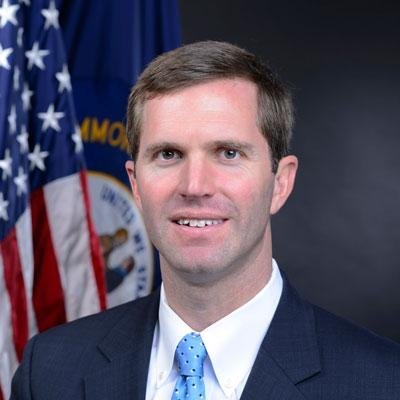At #RedforEd rallies, phonebanks, and in voting booths, educators spoke up for students and public schools, making sure their legislators listened to their concerns. In 2019, educators have a lot to show for their efforts.
1. Educators rallied behind #RedForEd across the country
Indiana educators rallied for higher pay, increased school funding, and to highlight the growing teacher shortage. North and South Carolina educators rallied to demand legislators reinvest in their schools and to protest the chronic underfunding. Educators from Maryland and Texas showed up in the thousands to talk about below national average teacher salaries and per pupil funding, advocating for legislation in Maryland that would add $325 million in new education spending for teacher salaries, community schools, special education and pre-K, plus a commitment to add $750 million in fiscal year 2021. In Colorado, the educators took to the streets for fair, livable pay. Virginia educators vowed to hold legislators accountable for funding. Minnesota, Massachusetts, California, and Nevada also saw wins following rallies.
The state that saw the most drastic funding turnaround, however, is Oregon, which saw a historic funding victory. In August, Gov. Kate Brown signed into law the Student Success Act, a corporate tax program that invests an additional $2 billion for public education.
2. Educators took on DeVos to protect online college students– AND WON
Thanks to the determination of NEA and its allies, a federal court ordered Secretary of Education Betsy DeVos to implement much-needed protections for U.S. students in online college programs.The DeVos administration’s defeat in federal court—the latest in a string of judicial strikeouts—marks another blast by NEA and its partners to DeVos’ anti-public education, pro-deregulation agenda.
This particular defeat stems from a lawsuit filed by three California educators with the support of NEA, the California Teachers Association (CTA), and the National Student Legal Defense Network (NSLDN). The plaintiffs pointed to DeVos’ rollback of federal protections for online students, specifically the “state authorization rule” that requires the Department of Education to share information with students about online higher education programs.
3. Public education champions won critical elections in 2019

Across the country, educators organized grassroots events, empowered members, and ran targeted member-to-member digital campaigns to highlight the important education issues in the 2019 elections. In Kentucky, educators worked hard to help elect Andy Beshear and Jacqueline Coleman as the state’s next Governor and Lt. Governor. Kentucky’s students and public schools were central to their campaign, and Beshear acknowledged educators’ hard work in his victory speech. Educators re-elected Gov. John Bel Edwards, who proved to be a partner to students, educators, and public schools in Louisiana.
NEA President Lily Eskelsen García shared the news of Virginia electing a pro-public education legislative majority, “Across the commonwealth, voters understood that the future of Virginia’s public schools was on the ballot. By electing public school champions, Virginia’s voters spoke loudly in demanding that every student has the opportunity to attend a quality public school and that educators should be respected and paid like professionals.”
4. U.S. House quadrupled the educator tax deduction
NEA hailed a huge, bipartisan win for students as the U.S. House of Representatives approved a $1.3 billion increase in education funding, while rejecting the Trump/DeVos administration’s proposed cuts and privatization schemes. The funding increase included an update to the Educator Tax Relief Act, allowing for a $1000 tax deduction for classroom supplies and instructional materials. This is an increase from the $250 approved and made permanent in 2015. The educator tax deduction helps recognize the financial sacrifices made by educators who often reach into their own pockets to purchase classroom supplies such as books, pencils, paper, and art supplies for their students.
5. NEA wins a huge victory when Congress passed a bill to increase funding critical programs, and repeal an unfair tax
NEA advocated for Congress to pass the Further Consolidated Appropriations Act of 2020, succeeding in the last month of the year. The amended bill, H.R. 1865 provides for increased investments in education, the extension of the Secure Rural Schools and Community Self-Determination Act (SRS), and funding for research on gun violence and for the 2020 Census. It also repeals the excise tax, which would have unfairly penalized educators who live in areas where health care is more expensive.
NEA President Lily Eskelsen García said, “Today’s bipartisan vote shows that in the House of Representatives, educators have been heard. The funding package approved by the House put students at the center, providing a $1.3 billion increase in education funding, rejecting the Trump/DeVos administration’s efforts to cut funding and privatize our nation’s public schools, and funding research on gun violence for the first time since 1996.
6. United educators struck a blow against for-profit charter schools
Educators pushed back as charter schools saturated many districts across the country, highlighting the costs to public education and to communities. Ohio’s charter sector — once considered the “Wild, Wild West” for charter expansion — has been knocked back on its heels by a deluge of embarrassing failures, most notably the notorious failure of the Electronic Classroom of Tomorrow, the state’s largest charter virtual school that closed its doors suddenly in late 2018. The resulting outcry forced Ohio lawmakers to strengthen accountability and require fraudulent charter school funds to be returned to school districts.
California dealt the charter industry its most serious recent setbacks. Tony Thurmond, strongly backed by the California Teachers Association, beat a former charter executive in the race for state superintendent, and promises to curb the growth of charter schools in the state. And the United Teachers Los Angeles (UTLA), in their historic and successful six-day strike in January, forced the district to reevaluate the impact of charter schools in their communities. The school board passed a resolution calling for a state study into the impact of charters and an 8- to 10-month moratorium on new charters in the district until the study is complete.
7. Congress voted to guarantee funding for HBCUs and MSIs

The bipartisan FUTURE Act was signed into law after passing the House by a vote of 319-96 and the Senate by voice vote. The bill permanently reauthorizes and provides $255 million in annual mandatory funding for Historically Black Colleges and Universities (HBCUs) and other Minority-Serving Institutions (MSIs). The FUTURE Act also takes steps to streamline the financial aid process, including simplifying the Free Application for Federal Student Aid (FAFSA) and eliminating unnecessary paperwork for federal student loan borrowers on income-driven repayment plans.





